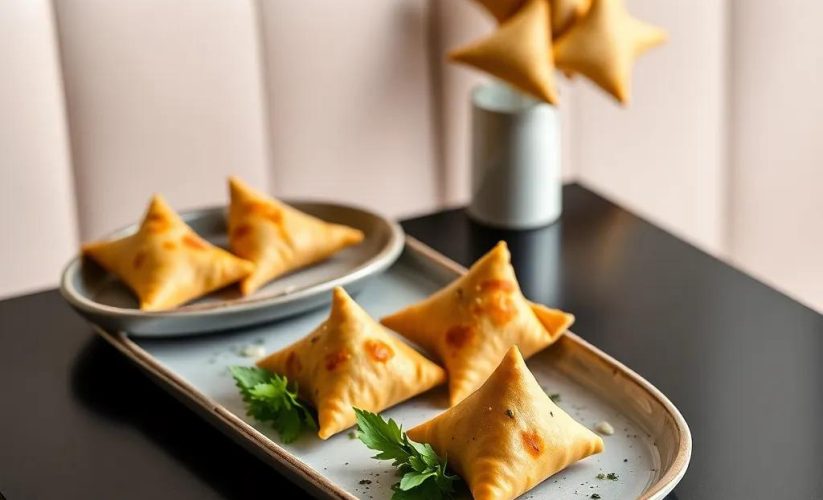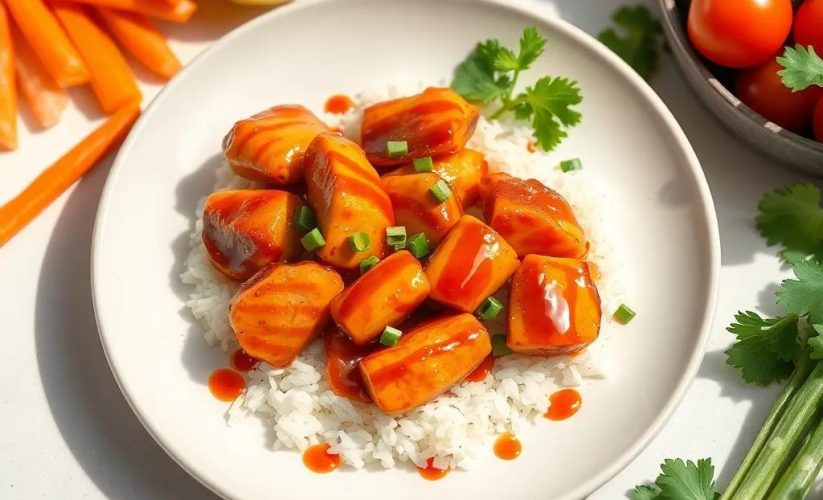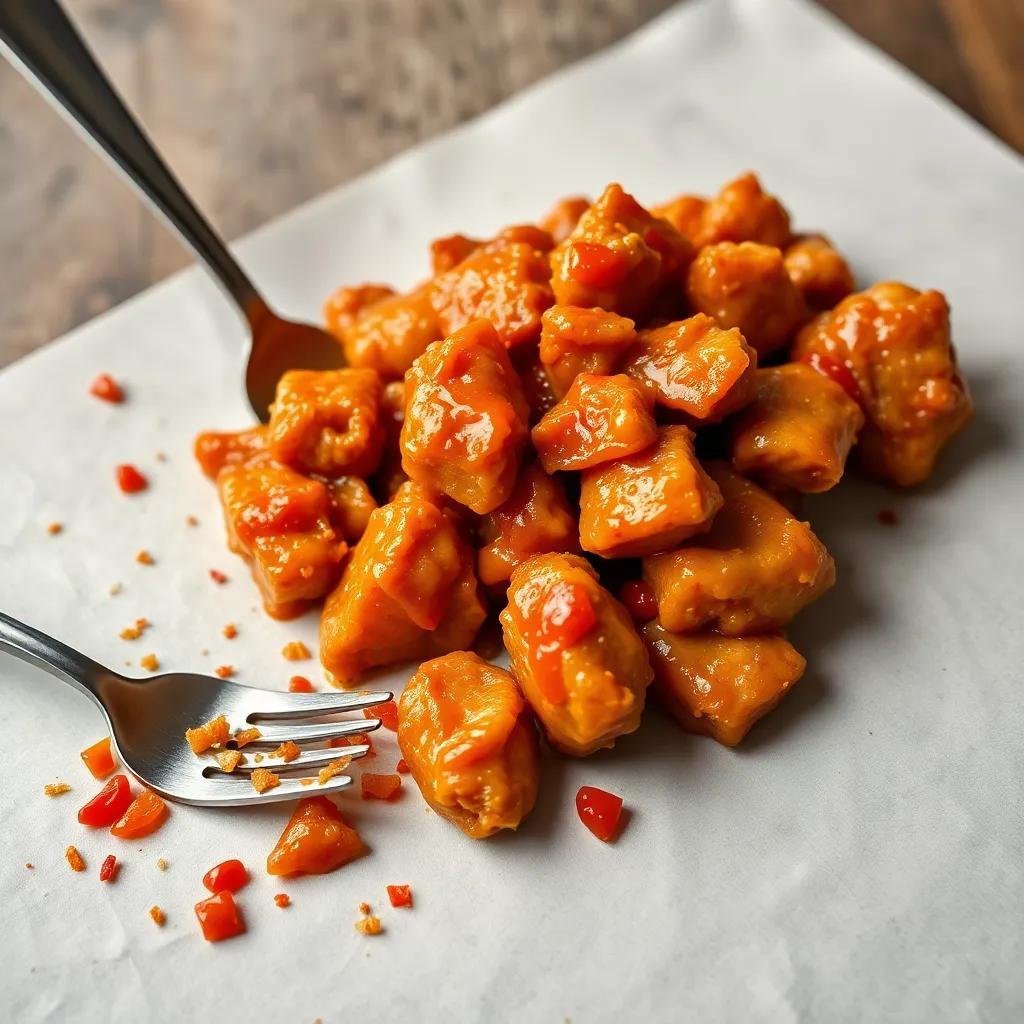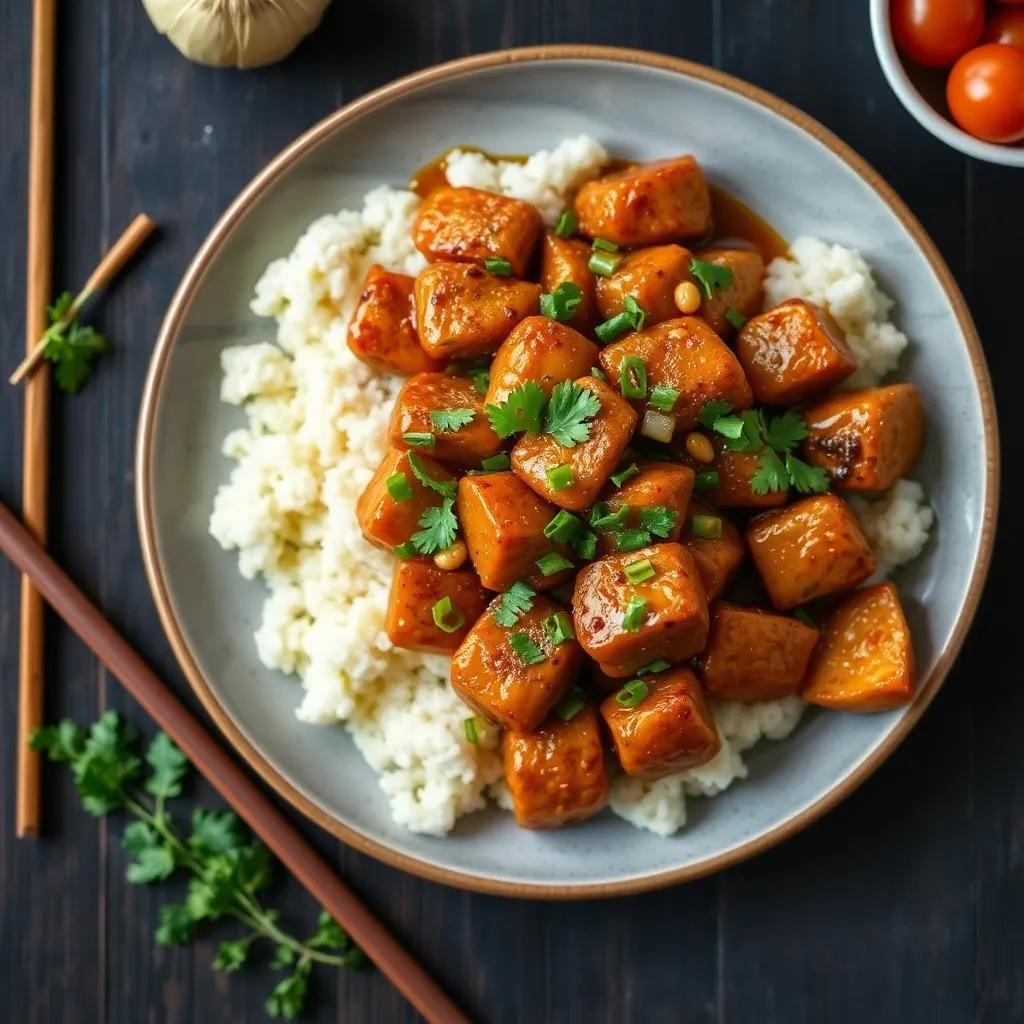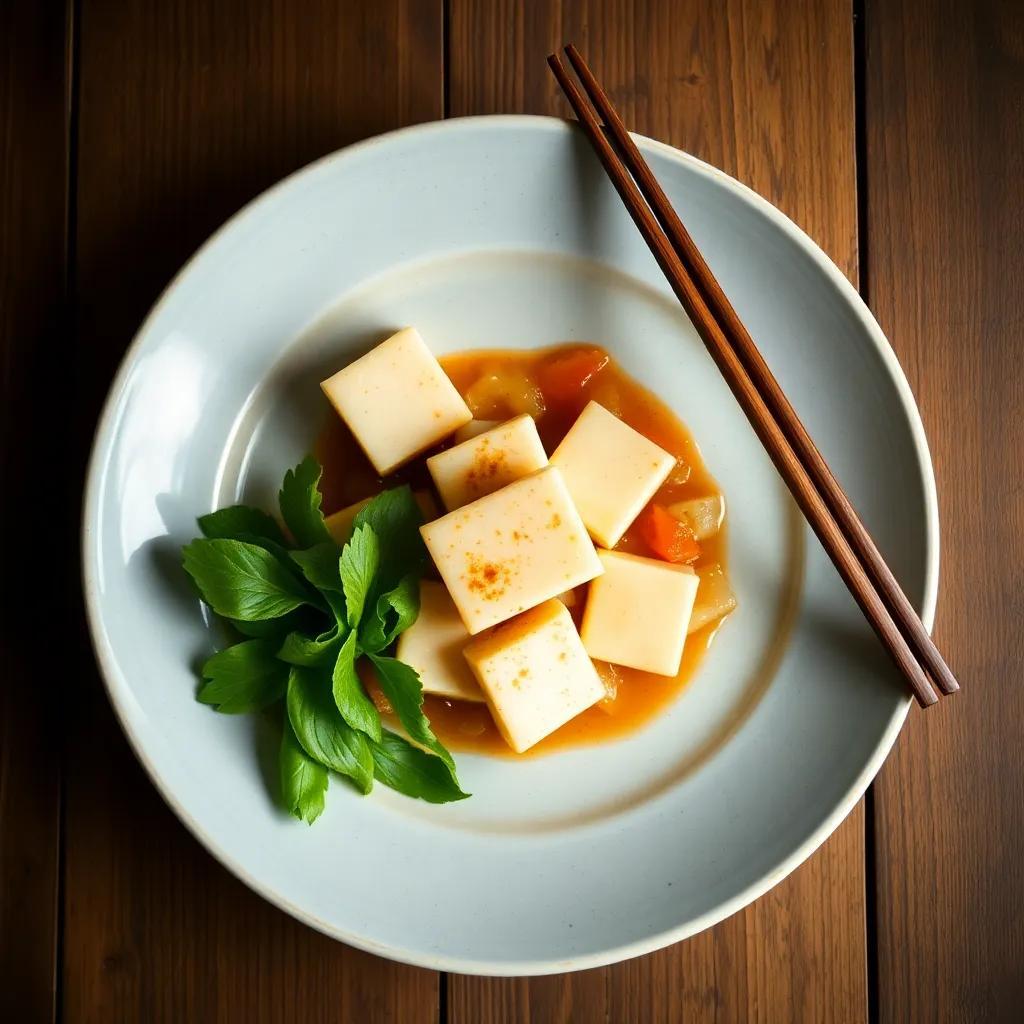Unlock Bold Flavors: Easy 30-Minute Kung Pao Chicken Recipe
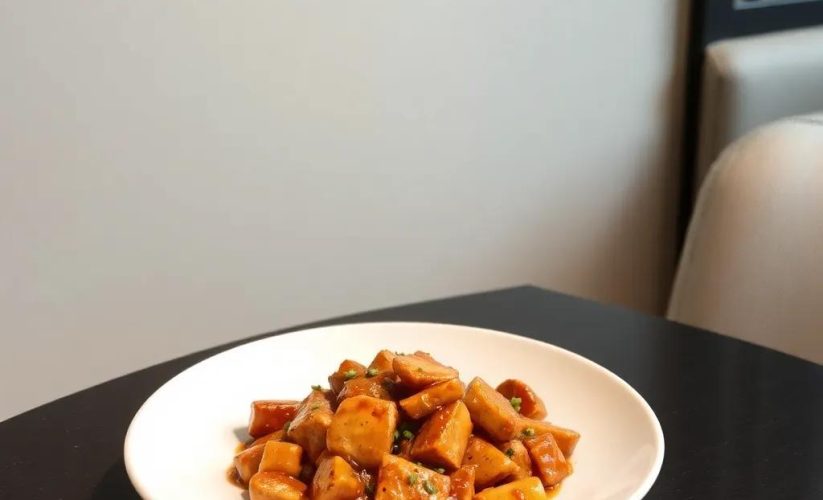
Unlock Bold Flavors: Easy 30-Minute Kung Pao Chicken Recipe
🌍 Cuisine: Chinese
⚙️ Difficulty: Easy
Ingredients
Nutrition Facts
400
Instructions
- Cut chicken into bite-sized pieces and season lightly with salt and pepper.
- In a small bowl, whisk together 1 tablespoon soy sauce, hoisin sauce, black vinegar, sugar, and cornstarch slurry. Set aside.
- Heat vegetable oil in a large skillet or wok over medium-high heat.
- Add dried red chilies and stir-fry for about 30 seconds until fragrant, being careful not to burn them.
- Add minced garlic, ginger, and the white parts of green onions; stir-fry for another 30 seconds.
- Add the chicken pieces and cook until no longer pink, about 5-7 minutes.
- Pour the prepared sauce mixture over the chicken and continue cooking, stirring frequently, until the sauce thickens and coats the chicken, about 2-3 minutes.
- Stir in the roasted peanuts and remaining 1 tablespoon soy sauce; mix well.
- Remove from heat and garnish with the green parts of the green onions.
- Serve immediately with steamed white rice.
Serving Suggestions
- Serve over steamed jasmine or basmati rice to soak up the flavorful sauce.
- Pair with a side of stir-fried vegetables like bok choy or broccoli for added nutrition.
- Garnish with extra chopped green onions or fresh cilantro for brightness.
- For extra heat, serve with chili oil or Sriracha on the side.
- Enjoy with a light Asian-style cucumber salad for a refreshing contrast.
- Serve alongside egg fried rice or vegetable fried rice for a heartier meal.
- Complement with a bowl of hot and sour soup or egg drop soup as a starter.
Table of Contents
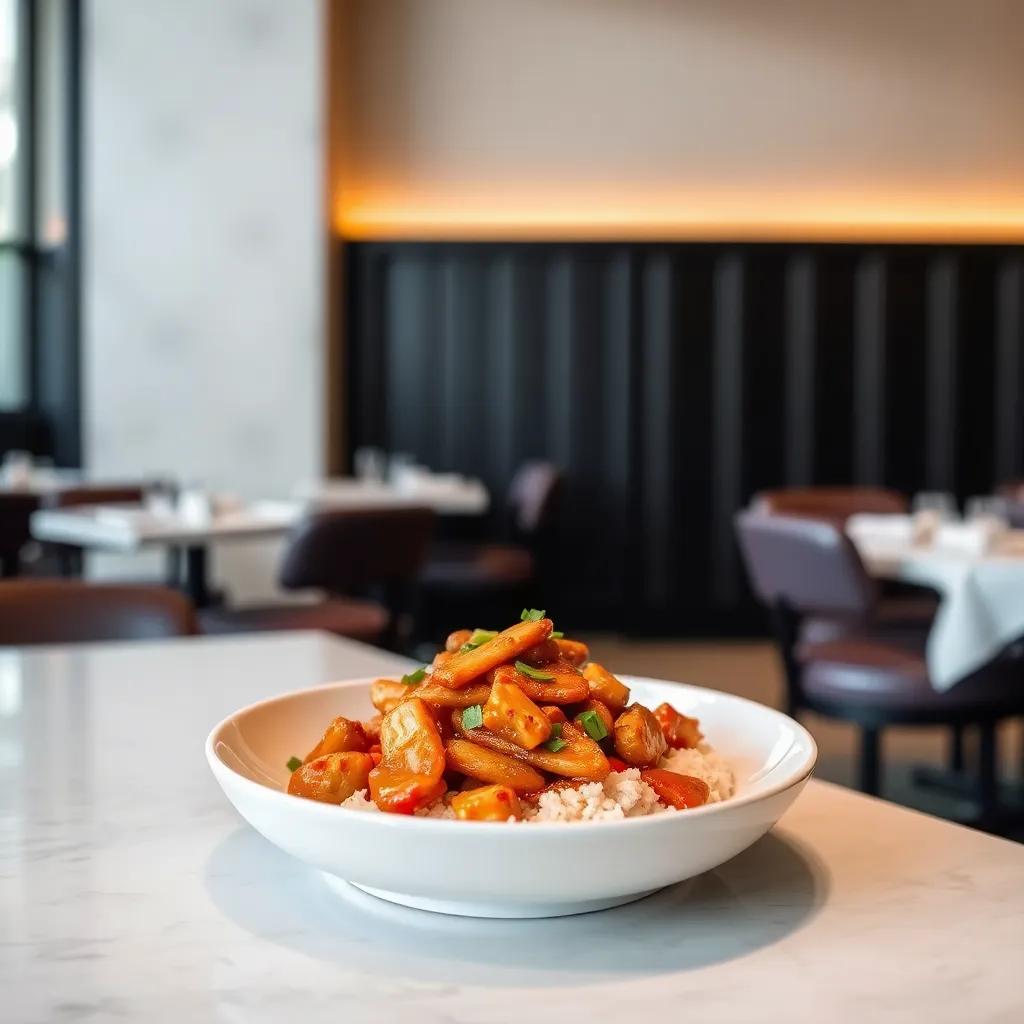
Intro
There’s something truly satisfying about a dish that delivers bold, exciting flavors without demanding hours in the kitchen—and that’s exactly what this Kung Pao Chicken recipe promises. Perfectly balanced with a lively mix of heat, tang, and a touch of sweetness, it’s a crowd-pleaser that feels both comforting and adventurous. Whether you’re cooking a weeknight dinner, entertaining friends, or simply craving a restaurant-quality meal at home, this recipe fits the bill with its straightforward steps and quick turnaround.
What makes this dish stand out is not just the flavor but the entire experience of cooking it. The sizzling wok, the aroma of toasted peanuts mingling with ginger and garlic, and the playful pop of dried chilies create a sensory invitation that elevates the everyday meal into something memorable. Even if you’re new to cooking Asian cuisine, this recipe’s simplicity ensures a smooth process without sacrificing authenticity.
Serve this vibrant dish alongside steamed rice to soak up every bit of that rich sauce. It also pairs beautifully with simple sides like stir-fried greens or a fresh cucumber salad to add brightness and texture. In short, this Kung Pao Chicken isn’t just dinner—it’s a gateway to unlocking bold flavors in your everyday cooking, proving that great taste can come together in just 30 minutes.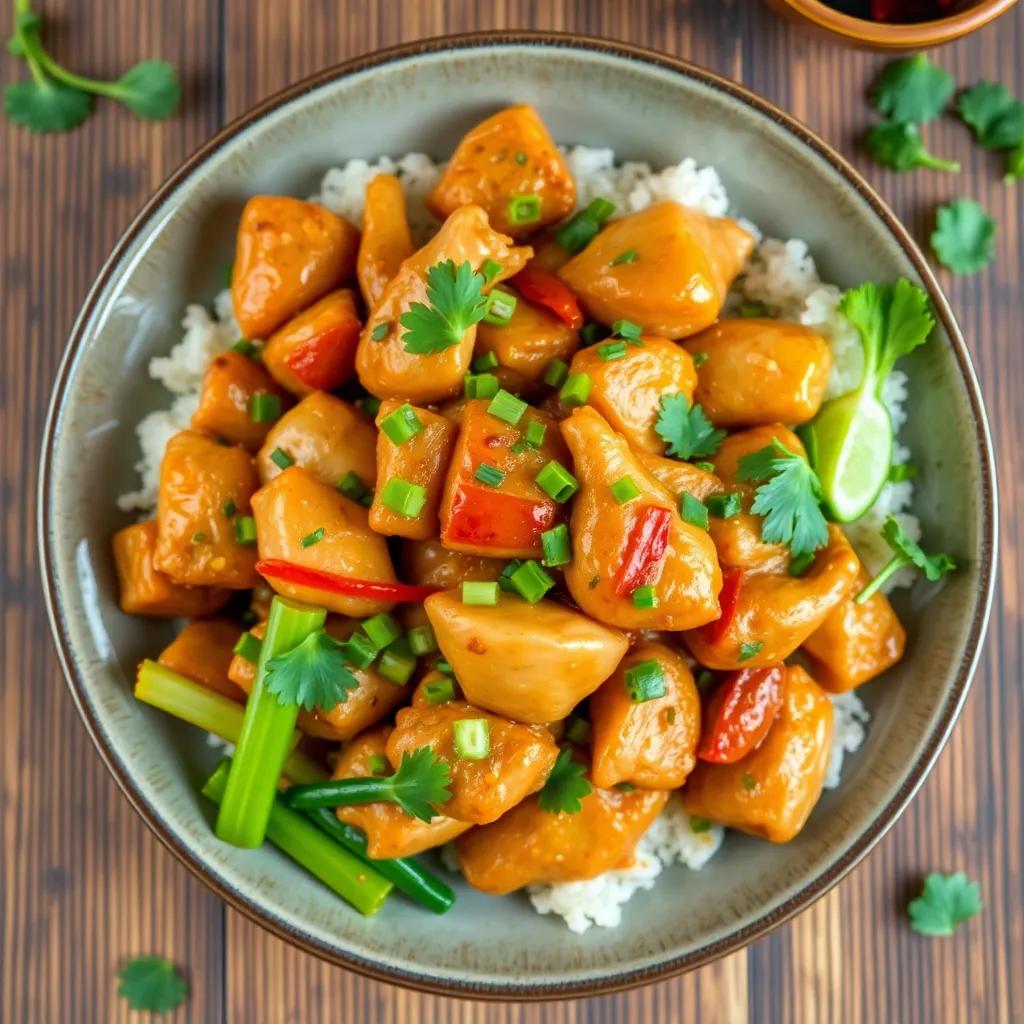
Ingredient Notes
A few key ingredients truly define this Kung Pao Chicken and elevate it beyond an everyday stir-fry. Understanding their roles and how to select them can make all the difference in unlocking the dish’s vibrant personality.
Dried Red Chilies
These small, dried chilies provide the signature fiery kick and a subtle smoky aroma that’s essential to authentic Kung Pao flavor. When shopping, look for varieties labeled as Chinese chili peppers or Sichuan dried chilies, often available at Asian markets or online. Removing the seeds helps control the heat level, but leaving some in will amp up the warmth for those who love a spicier bite. If you can’t find dried chilies, crushed red pepper flakes can be a convenient substitute, though they won’t impart quite the same smokiness. For a milder version, try using just one or two chilies or swap in sweet paprika for color without heat.
Chinese Black Vinegar (or Rice Vinegar)
Chinese black vinegar offers a rich, slightly sweet tang that adds depth and balance to the sauce’s bold savory notes. It’s more complex than standard vinegar, with hints of molasses and malt, so don’t rush this step—it’s what offsets the saltiness and heat beautifully. Black vinegar can be found at well-stocked Asian groceries, but if it’s unavailable, a good-quality rice vinegar mixed with a small pinch of sugar is a reasonable alternative. Avoid white vinegar, which can be too sharp and harsh, disrupting the delicate harmony in this dish.
Hoisin Sauce
Hoisin sauce is that luscious, thick, umami-packed ingredient that rounds out the sauce with sweetness and a touch of fermented complexity. Made from soybeans, garlic, vinegar, and spices, it blends smoky and tangy flavors that enrich the stir-fry. When buying hoisin sauce, opt for reputable brands with a smooth consistency and balanced sweetness—too sweet or too salty can throw off the final taste. If you’re in a pinch, mixing a little soy sauce with a small dollop of miso paste and honey can mimic its depth, though the flavor won’t be identical.
Roasted Peanuts
These bring a satisfying crunch and nutty richness that contrast beautifully with the tender chicken and bold sauce. Freshly roasted peanuts yield the best texture and flavor, so if possible, buy them raw and toast at home for a few minutes until golden. Avoid salted or heavily seasoned peanuts to maintain control over the dish’s saltiness. Cashews can be a tasty swap if you prefer a different nutty note, but keep the roasting step to unlock their full flavor.
With these ingredients thoughtfully chosen and handled, your Kung Pao Chicken will boast the authentic boldness and textural interplay that makes it a standout favorite. Each element plays a starring role—not just in flavor, but in creating a dynamic and exciting eating experience that’s distinctly Chinese yet welcomingly approachable.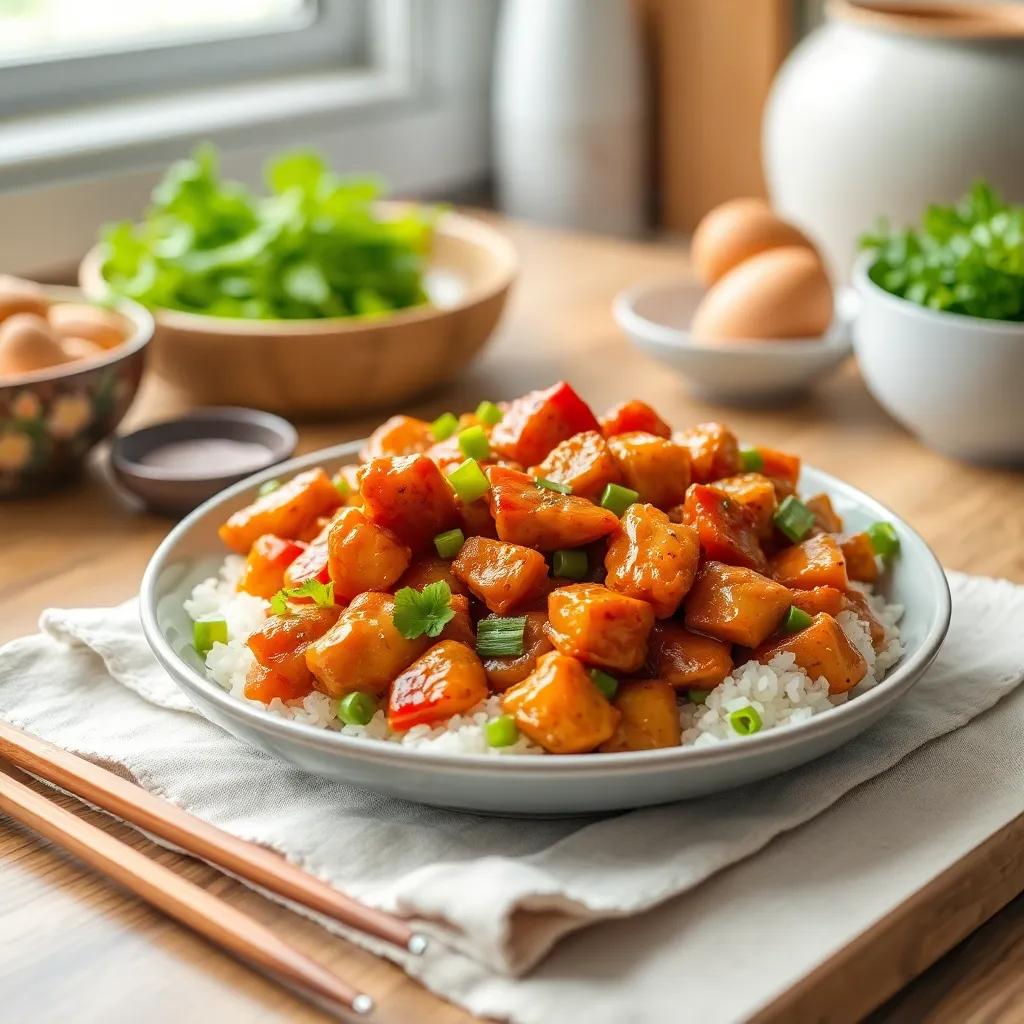
Tips & Variations
Mastering Kung Pao Chicken in just 30 minutes doesn’t mean you have to settle for ordinary. Here are some pro tips and creative twists to elevate your dish, customize flavors, and accommodate different dietary needs—all while keeping things easy and delicious.
- Balancing Heat and Flavor: The dried red chilies provide signature heat and aroma, but everyone’s spice tolerance varies. If you’re serving kids or those sensitive to spice, reduce the number of chilies or remove all seeds for a milder profile. For a smoky twist without extra heat, try lightly toasting the chilies before adding them, which deepens their flavor without raising the fire.
- Protein Swaps and Additions: While chicken breast or thigh works beautifully here, feel free to substitute with firm tofu cubes or tempeh for a vegetarian or vegan version. Press tofu beforehand to remove excess moisture, and pan-fry until crispy before adding the sauce. For pescatarians, firm white fish or shrimp can be quick alternatives—cook these gently so they stay tender.
- Gluten-Free Adjustments: Traditional soy sauce contains wheat, so swap in tamari or coconut aminos to keep the dish gluten-free without sacrificing that savory umami boost. Double-check hoisin sauce labels or try a gluten-free hoisin substitute (or a homemade blend of miso, honey, and a dash of five-spice powder) to maintain depth in the sauce.
- Fresh vs. Crunchy Peanuts: The roasted peanuts are more than just garnish—they’re a critical texture contrast. For extra crunch and freshness, consider tossing the peanuts in a dry skillet for a minute or two before adding, or try chopped toasted cashews or even walnuts. For nut allergies, toasted pumpkin seeds or roasted chickpeas can lend crunch without overpowering the flavor.
- Sauce Enhancements: If you want to experiment, add a touch of freshly grated Sichuan peppercorns or a splash of chili oil to amplify the numbing spice and aroma synonymous with true Sichuan cuisine. Alternatively, a drizzle of honey or maple syrup can add a subtle sweetness that complements the tangy vinegar and savory hoisin.
- Vegetable Boosts: Kung Pao isn’t just about chicken and peanuts. Incorporate diced bell peppers, zucchini, or snap peas for added color and nutrition. Toss them in right before the chicken finishes cooking to keep a pleasant crunch. Baby corn or water chestnuts can also add fun textures and authentic flair.
- Make it a One-Pan Meal: For busy nights, stir in cooked rice or noodles toward the end along with a splash more soy sauce or broth. This not only saves on pots but helps the rice absorb the flavors of the sauce directly, creating a comforting, cohesive dish.
- Presentation and Serving Ideas: Garnish with a squeeze of fresh lime juice or a sprinkle of toasted sesame seeds to brighten the dish and add extra aroma. A side of pickled vegetables or a crisp Asian slaw can offer a refreshing contrast to the rich, spicy sauce.
By mixing and matching these suggestions, you can transform this kung pao chicken recipe to suit your palate, accommodate dietary needs, or simply try something new—all while honoring the bold, vibrant spirit that makes this dish a beloved classic.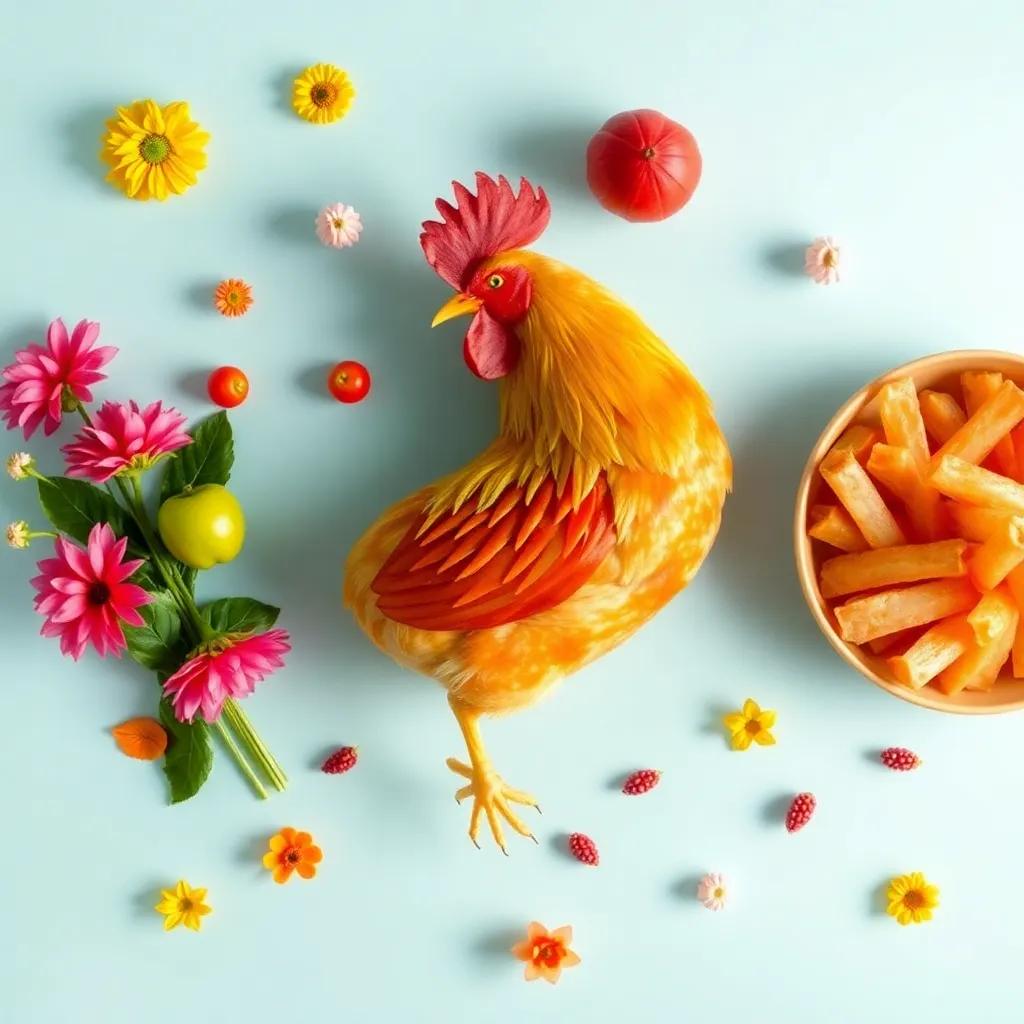
Leftovers & Storage
After indulging in the spicy, savory goodness of your Kung Pao Chicken, you might find yourself with some tempting leftovers—good news is, this dish stores beautifully and makes for a delicious next-day meal or easy prep for busy days ahead. To keep that vibrant flavor and satisfying texture intact, storing and reheating with care is key.
For best results, allow the Kung Pao Chicken to cool to room temperature before packing it away. Transfer the leftovers into an airtight container to prevent drying out or absorbing fridge odors. Glass or BPA-free plastic containers with tight-sealing lids work wonderfully, as they help preserve freshness and maintain the sauce’s luscious consistency. If you prefer, dividing portions into individual containers can make grab-and-go lunches a breeze.
In the refrigerator, your Kung Pao Chicken will stay fresh and flavorful for up to 3 to 4 days. This timeframe gives you plenty of opportunities to enjoy reheated leftovers without worrying about spoilage. If you want to extend its lifespan, freezing is a practical option. Pack the cooled dish into freezer-safe containers or heavy-duty freezer bags, leaving a little headspace for expansion. Label with the date to keep track—frozen Kung Pao Chicken will maintain good quality for up to 2 months.
When it’s time to enjoy your stored meal, reheating gently prevents the chicken from drying out and the peanuts from losing their crunch. On the stovetop, warming the leftovers over medium-low heat with a splash of water or broth can help loosen the sauce as it revives the flavors. Microwaving is convenient too; cover the dish loosely with a microwave-safe lid or damp paper towel to trap moisture and heat in short bursts, stirring midway to ensure even warming.
One fun way to repurpose leftovers is by quickly stir-frying some fresh vegetables like bell peppers, snap peas, or broccoli alongside the reheated Kung Pao Chicken. This refreshes the dish with new textures and colors, making your meal feel brand new without extra prep time.
Finally, whether packed for a work lunch or held ready in your fridge, this recipe’s bold, tangy sauce and crunchy peanuts keep it exciting even after a day or two. Just remember to give it a check for signs of spoilage before eating—when in doubt, trust your senses!
With these storage and reheating tips, your Kung Pao Chicken leftovers can easily become a convenient, crave-worthy meal that continues to unlock bold flavors long after the initial cooking.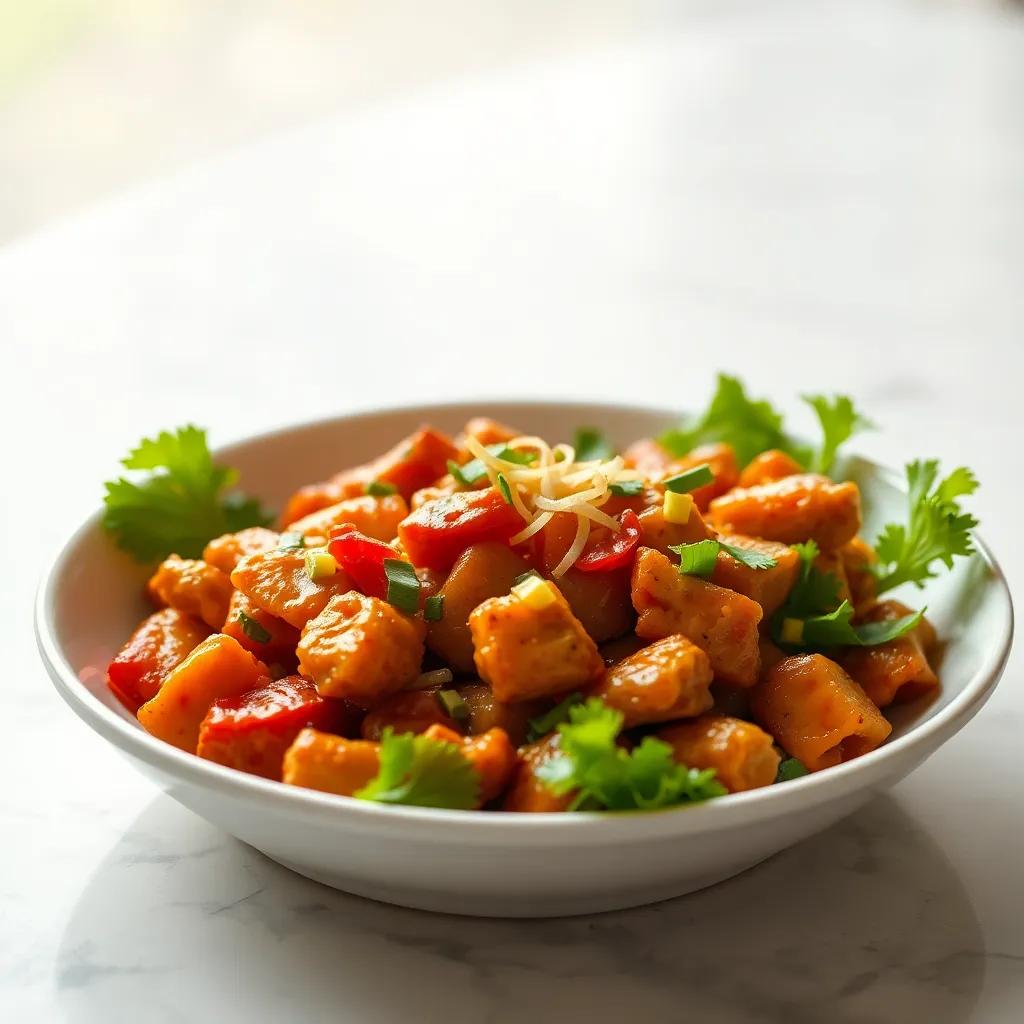
Behind the Recipe
Kung Pao Chicken carries with it a rich cultural and culinary heritage that traces back to Sichuan province in southwestern China, a region renowned for its bold, fiery flavors and the clever use of numbing Sichuan peppercorns. Traditionally, this dish was a humble home-cooked meal, crafted by wives preparing flavorful, economical dinners for their families. Over time, its irresistible blend of spicy, sweet, and savory notes helped Kung Pao Chicken transcend regional boundaries, becoming a beloved classic in Chinese restaurants worldwide.
The name itself pays homage to a Qing Dynasty official, Ding Baozhen, whose title “Gong Bao” (meaning “palace guardian” or “lord”) inspired the dish’s name. While the original Sichuan recipe often spotlighted pork or diced chicken with a characteristic tongue-tingling heat, the essence has evolved, making way for variations that best suit modern kitchens—like this quick and approachable 30-minute version.
Personally, Kung Pao Chicken holds a special place in many home kitchens as a gateway to Chinese flavors—its approachable technique invites cooks of all levels to experiment with balancing heat, sweetness, acidity, and crunch. Its vibrant combination of roasted peanuts and dried chilies always signals a meal that’s alive with texture and personality. Preparing this dish often sparks memories of bustling family dinners or the excitement of recreating restaurant favorites at home.
In this recipe, the focus is on unlocking those bold tastes with everyday ingredients and straightforward steps, making the heritage behind Kung Pao accessible and practical for today’s fast-paced life. Each stir-fry sizzle is a nod to its origins, while every bite reminds us why it remains a timeless celebration of flavor and culture.
FAQ
Can I use tofu instead of chicken for a vegetarian version?
What’s the best way to store leftovers?
Can I make the sauce ahead of time?
How can I adjust the heat level without losing flavor?
Is it okay to freeze Kung Pao Chicken?
What veggies work well in this recipe if I want to add more?
Can I use other nuts besides peanuts?
Bon Appétit!
There’s something truly satisfying about a meal that’s bursting with bold flavors yet ready in just 30 minutes—and this Kung Pao Chicken recipe hits that sweet spot perfectly. Whether you’re cooking for a weeknight dinner or craving a quick taste of something adventurous, it brings that signature balance of spicy, sweet, and savory right to your table with ease.
Give it a try and discover how simple it is to unlock those vibrant flavors at home. We’d love to hear what you think—drop a comment, share your rating, or tell us about your own delicious twists. Happy cooking and even happier eating!

